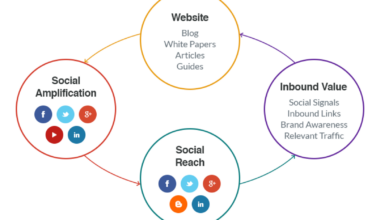Introduction: What is an XML Sitemap?
As a website owner, you might have heard about sitemaps. But have you ever heard of an XML sitemap? An XML sitemap is a file that contains a list of all the pages on your website and provides information about the structure of your site to search engines. It’s a file that you can create and upload to your website’s server, making it easier for search engines to crawl and index your site.
Unlike HTML sitemaps, which are designed for humans to navigate your website, XML sitemaps are specifically designed for search engines. They provide a complete list of all the pages on your website, making it easier for search engines to find and index your content.
XML sitemaps use XML (Extensible Markup Language) to structure the information about your website and its pages. XML is a format that is easily understood by search engines and other web applications. The sitemap provides information like the date the page was last updated, the frequency of updates, and the importance of the page relative to other pages on your site.
In short, an XML sitemap is a roadmap to all the pages on your website. It’s a file that lists all the URLs that are available for crawling and indexing by search engines. It helps search engines understand the structure of your website and how all the pages are related to each other.
Now that you know what an XML sitemap is, let’s take a look at why it’s important for SEO.
Importance of XML Sitemap for SEO
An XML sitemap plays a crucial role in improving the search engine optimization (SEO) of your website. Here are some reasons why:
1. Helps Search Engines Crawl and Index Your Pages:
Search engines use bots or spiders to crawl through your website and index your pages. However, they may miss some of your pages if they are not linked properly. An XML sitemap provides a roadmap to all the pages on your website, making it easier for search engine bots to crawl and index your pages.
2. Improves Website Ranking:
When search engines crawl and index your pages, they use complex algorithms to determine the ranking of your website. The better your website is indexed, the higher it will rank in search engine results pages (SERPs). An XML sitemap helps search engines understand the structure and hierarchy of your website, which can lead to improved rankings.
3. Highlights Important Pages:
You can use XML sitemaps to prioritize your important pages. By assigning a higher priority to specific pages, you can tell search engines which pages are more important than others. This can help improve the ranking of those pages in search engine results.
4. Alerts Search Engines to Changes:
If you make changes to your website, search engine bots may not immediately crawl and index your updated pages. By submitting an updated XML sitemap to search engines, you can alert them to the changes and ensure that your updated pages are indexed promptly.
Creating an XML sitemap is relatively simple and can be done using various online tools or plugins. Once you have created your sitemap, it’s important to submit it to search engines like Google and Bing. This will ensure that your website is crawled and indexed efficiently.
In conclusion, an XML sitemap is an essential tool for improving the SEO of your website. By providing a roadmap to all the pages on your website, it can help search engine bots crawl and index your pages more efficiently. It can also improve the ranking of your website and alert search engines to any changes you make. So, if you want to improve the visibility and ranking of your website, creating an XML sitemap is a must.
Benefits of having an XML Sitemap
Having an XML sitemap on your website offers numerous benefits. Let’s take a look at some of them below:
1. Improved User Experience:
An XML sitemap helps users easily navigate through your website. It provides a clear and organized structure of your website’s pages, making it easier for users to find what they are looking for. This improves the overall user experience of your website, which can lead to increased traffic and engagement.
2. Increased Visibility:
An XML sitemap helps search engines discover and index your website’s pages more efficiently. This can lead to increased visibility in search engine results, which can drive more organic traffic to your website.
3. Faster Indexing:
By providing a complete list of all the pages on your website, an XML sitemap helps search engines quickly discover and index new pages. This can lead to faster indexing of your website’s pages, which means they will appear in search engine results sooner.
4. Better Crawling:
An XML sitemap provides search engines with information about the hierarchy and structure of your website. This helps search engine bots crawl through your website more efficiently, ensuring that all of your pages are indexed properly.
5. Enhanced SEO:
An XML sitemap is an important tool for SEO. It helps search engines understand the structure and hierarchy of your website, which can lead to improved rankings in search engine results. By highlighting important pages and URLs, you can also improve the overall SEO of your website.
By now, you must be wondering how you can create an XML sitemap for your website. Let’s take a look at the steps involved in creating an XML sitemap in the next section.
How to create an XML Sitemap
Creating an XML sitemap for your website is a straightforward process. Here are the steps involved in creating an XML sitemap:
1. Determine the Pages You Want to Include:
Before creating your XML sitemap, you need to decide which pages you want to include. Typically, you should include all the pages that you want search engines to crawl and index. This includes your homepage, blog posts, product pages, and any other pages that you want to appear in search engine results.
2. Choose a Tool to Create Your XML Sitemap:
There are several tools available that can help you create an XML sitemap for your website. Some popular options include:
- Yoast SEO Plugin: If you use WordPress, the Yoast SEO plugin can automatically generate an XML sitemap for you. Simply install and activate the plugin, and it will create a sitemap for your website.
- Google XML Sitemaps: This is another popular plugin that can help you generate an XML sitemap for your website. It’s available for both WordPress and non-WordPress websites.
- Online Sitemap Generators: If you don’t want to use a plugin, you can use an online sitemap generator like XML Sitemap Generator or Screaming Frog SEO Spider.
3. Generate Your XML Sitemap:
Once you have chosen a tool to create your XML sitemap, follow the instructions provided by the tool to generate your sitemap. This typically involves entering your website’s URL and selecting the pages you want to include.
4. Test Your XML Sitemap:
Before uploading your XML sitemap to your website’s server, it’s essential to test it to ensure that it’s working correctly. You can use tools like XML Sitemap Validator or Google Search Console to test your sitemap.
5. Upload Your XML Sitemap:
Once you have generated and tested your XML sitemap, it’s time to upload it to your website’s server. You can do this by using an FTP client or by uploading it through your website’s content management system (CMS).
6. Submit Your XML Sitemap to Search Engines:
Finally, you need to submit your XML sitemap to search engines like Google and Bing. This will help search engines discover and index your website’s pages more efficiently. To submit your sitemap, log in to your Google Search Console account and navigate to the Sitemaps section. From there, you can submit your sitemap and monitor
Submitting an XML Sitemap to Search Engines
Now that you have created your XML sitemap, it’s essential to submit it to search engines like Google and Bing. This will ensure that your website is crawled and indexed efficiently. Here are the steps involved in submitting your XML sitemap to search engines:
1. Submit Your Sitemap to Google Search Console:
Google Search Console is a free tool provided by Google that helps website owners monitor and maintain their website’s presence in Google search results. To submit your XML sitemap to Google Search Console, follow these steps:
- Log in to your Google Search Console account.
- Select your website from the list of properties.
- Click on “Sitemaps” under the “Index” section in the left sidebar.
- Enter the URL of your sitemap and click on the “Submit” button.
2. Submit Your Sitemap to Bing Webmaster Tools:
Bing Webmaster Tools is a free tool provided by Bing that helps website owners monitor and maintain their website’s presence in Bing search results. To submit your XML sitemap to Bing Webmaster Tools, follow these steps:
- Log in to your Bing Webmaster Tools account.
- Select your website from the list of properties.
- Click on “Configure My Site” and then “Sitemaps”.
- Enter the URL of your sitemap and click on the “Submit” button.
3. Monitor Your Sitemap:
Once you have submitted your XML sitemap to search engines, it’s essential to monitor it regularly to ensure that it’s working correctly. You can use the search engine’s webmaster tools to check for any errors or warnings related to your sitemap. If you make any changes to your website, it’s also important to update your XML sitemap and submit it again to search engines.
In conclusion, submitting your XML sitemap to search engines is a crucial step in improving the SEO of your website. It helps search engines crawl and index your pages more efficiently, leading to improved rankings and visibility in search engine results. By following the steps outlined above, you can submit your XML sitemap to search engines and monitor it regularly to ensure that it’s working correctly.
Final Thought: Why Your Website Needs an XML Sitemap
In today’s digital age, having a website is not enough. You need a website that is easily discoverable by search engines and provides a good user experience. An XML sitemap can help you achieve both of these goals. By providing a roadmap to all the pages on your website, it helps search engines crawl and index your pages more efficiently. This can lead to improved rankings and visibility in search engine results.
Creating an XML sitemap is relatively simple and can be done using various online tools or plugins. Once you have created your sitemap, it’s important to submit it to search engines like Google and Bing. This will ensure that your website is crawled and indexed efficiently.
In addition to improving your website’s SEO, an XML sitemap offers numerous other benefits. It can improve the user experience of your website, increase visibility in search engine results, and help search engines discover and index your website’s pages more efficiently.
Overall, an XML sitemap is an essential tool for any website owner who wants to improve the discoverability and visibility of their website. By creating and submitting an XML sitemap, you can ensure that your website is easily discoverable by search engines and provides a good user experience. So, if you haven’t already created an XML sitemap for your website, it’s time to do so now.






















